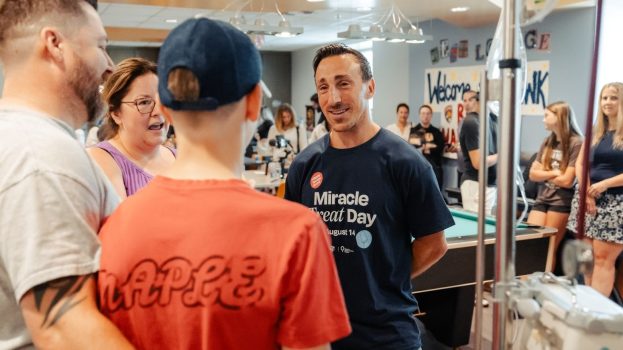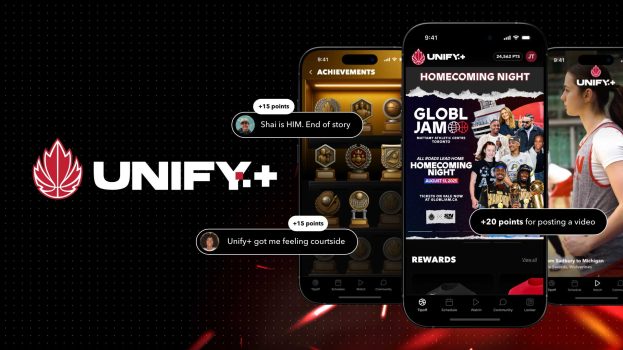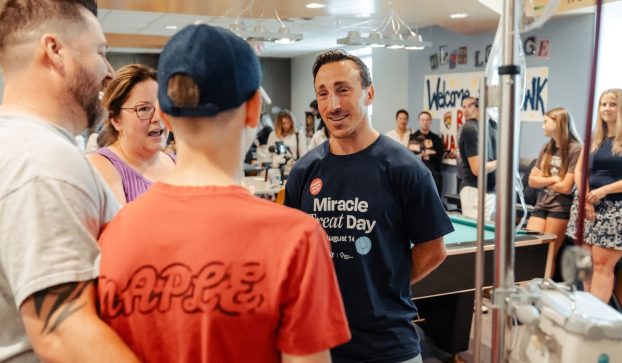
This article originally appeared in the Spring 2023 issue of strategy.
Written by Will Novosedlik
We live in extraordinary times. The ground beneath our feet is shifting. It feels like we’re between worlds – the one we used to know and the one we don’t yet understand.
On a macro scale, a complex cluster of overlapping forces – the global pandemic, rampant inflation, energy scarcity, war, migration, technological disruption and climate change – is working to destabilize and reshape the world we thought we knew. And, in times like these, we desperately yearn for certainty and simplicity.
The world of marketing is no exception. It has been profoundly destabilized by technological change. It’s in a broad transition from a one-size-fits-all, limbic form of mass communications to the hyper-personalized, algorithmic form of individuated experience. The question is: are we headed into the unknown with a toolkit that was designed for a world that no longer exists? If so, what tools do marketers need to navigate increasing instability, complexity and uncertainty?
To discuss that question, we’ve collaborated with experts in strategic insight and foresight, advertising and artificial intelligence. We’ll take a look at the world we’re in as marketers and what kinds of questions we should be asking now to be future-proofed later.
Rejecting complexity
Brands operate in a world of ever-increasing complexity. Like people, they gravitate towards simplification.
Marketing’s own obsession with simplicity, rooted in the religion of operational efficiency, has historically been aimed at reaching the greatest number of people with the same message so as to maximize sales and achieve the greatest ROMI. Brands are the tools business has used to train us to expect communications and ideas to be as simple as possible. Ergo, they’ve been busy dumbing us down for over a hundred years.

Paul Hartley, anthropologist and co-founder of strategic foresight firm Human Futures Studio.
This obsession with operational efficiency has also diminished the quality of research. Market research has historically classified humans into clusters with similarly perceived needs, interests and behaviours, but only just enough perceived similarity as is necessary to achieve conversion at a scale large enough to justify the investment.
“Brands have depended on simplifying these clusters so that they’re easy to manage, which results in a kind of overgeneralization that immediately renders these clusters useless,” asserts Paul Hartley, anthropologist and co-founder of strategic foresight firm Human Futures Studio. “This kind of oversimplification is creating a situation where businesses and brands react to artificial circumstances that reflect their own view of the world. That promotes weak strategy and poor engagement with customers. Avoiding these tendencies means doing the hard work of learning about the world as it is through an ethnographic lens and engaging it without blinders.”
Or… without algorithms.
The rise of the algorithm
We all know that human online interactions are governed by an algorithm designed to make sure that platforms like Twitter can monetize their business models with predictive user data. “But this model is creating havoc in ways no one expected,” says Hartley. “The power of that business model is now manifesting itself through the way it filters information and interactions.”
“The poster boy for this transformation is Elon Musk,” sums Mat Lincez, foresight strategist and co-founder of Human Futures Studio. Musk has taken his new toy in a chaotic new direction, transforming the platform in unexpected ways. “How does that start to influence where marketers place their dollars?” Lincez asks. “Who’s the gatekeeper in terms of the experience you’re being offered or not? That’s why the story about TikTok being regulated or banned in the U.S. is becoming a legislative conversation. And these are big issues. Think of the billions of dollars that brands are pouring into TikTok.”
Then there’s Google. Says Hartley, “Google-as-gatekeeper has its own agenda with its customer base, and is trying to insert itself into that marketer/customer relationship wherever possible. Marketers don’t actually get to talk to everybody. They now have to understand that they’re only going to get in with the people that Google thinks is important to talk to, because it’s in Google’s interests to do so.”

Mat Lincez, foresight strategist and co-founder of Human Futures Studio.
We don’t know exactly what’s going on there because the platform keeps that data as leverage in negotiating for margin. They have total visibility as to where all the traffic’s going and coming from, and where to insert choke points. They take all that information and sell it to advertisers – and advertisers have to buy it to ensure they show up in the right place for customers to interact with their content. That erodes their margin.
“Here’s the threat: the algorithm is no longer just telling you about the way the world works; it’s changing the way the world works,” warns Hartley. “It has the power to do so – multiplied over the companies that are doing it (Google, Facebook, Twitch, YouTube, etc.). The algorithm is actually picking and choosing how you get to learn and what messages you get to hear.”
The medium is no longer the message. The algorithm is.
The disappearing brand
In 2017, marketing prof Scott Galloway proclaimed that it was the “end of the brand era because, online, people search by category far more than by brand.”
In a Harvard Business Review article from the same year, co-authored by Roger Martin, former dean of the Rotman School of Management, and A.G. Lafley, former CEO of P&G, entitled “Customer Loyalty Is Overrated: A Theory of Cumulative Advantage,” the authors suggest that sustained competitive advantage comes not from offering customers the perfect choice – but by offering them the easy one. Repeated exposure to your brand, through messaging or experience or both, trains our lazy brains that you are the easiest choice.
So will we come to like the brands that bring us the brands more than the brands they bring us?
The idea of the disappearing brand is taken to an extreme in the documentary You’re Soaking in It, in which an exec at programmatic media outfit Varick Media speculated that, “In the future, we will probably not have advertising. You won’t need to be exposed to marketing anymore because you will start trusting computer recommendations.”
Currently, the business of advertising and media is scrambling to keep up with the rapidly evolving capability of algorithms to find, observe and collect data on every move we make as both people and consumers, and then to teach AI what to do with it.
“It’s becoming more important to provide an individuated experience to every customer and to provide it all at once to as many people as possible across the globe,” Hartley continues. “Media fragmentation has been underway for some time and it is continuing unabated. New platforms are emerging, growing, peaking and fading faster than ever before. But market fragmentation is happening, too. Increasingly optimized and personalized targeting leads to atomization of your target market.”
No one is ready for the cognitive and informational overload that precision brings at this new ultra-micro, ultra-refined level. “Designing for this new future is now more complicated because of this expectation of precision,” continues Hartley. “What if you don’t have two markets, or two target customers, but 50 or 100, all with very specific rules of engagement? No one can manage 100 markets, because the world is a lot more complicated and finely drawn than most research commonly assumes. You have to scale your efforts to manage that. If you have a problem that necessitates understanding 100 markets, then you have to do the work (and spend the time) to study them all. This will take a very long time, but that’s what’s necessary. You can’t take short cuts and only study the world you want to study.”
But how to accomplish that at scale? And should we even try?
Personalization or surveillance?
“I’m operating under the assumption that consumers will reject hyper-personalization,” says Sabaa Quao, chief creative officer of Cossette and co-founder at Wealthie Works Daily. “I can’t think of anyone who now doesn’t find it stalker-ish. How many of us have uttered words to the effect of ‘I swear my mobile phone is listening to me and then sending me ads?’
“Here’s the big example that hyper-personalization is about to fail: the mass rejection of tracking when Apple initiated their App Tracking Transparency protocols. If Meta does indeed lose $10B in revenue as a result… well, that should be a good clue to everyone else that the advertising stalking and creeping racket is over. People might want personalized experience but not at the expense of feeling creeped,” says Quao.

Sabaa Quao, chief creative officer of Cossette and co-founder at Wealthie Works Daily.
In a recent op-ed in The Drum, Google’s ads privacy lead Claire Norburn claimed that, despite its efforts to move away from cookies, Google does not believe contextual ads will be enough to “pay for the web that everyone wants.” Without personalized advertising, it’s been estimated that between $32 billion and $39 billion in revenues would be lost to advertisers, publishers and platforms.
For his fintech, Quao has taken a different approach by addressing connected groups of people rather than individuals. Says Quao, “What’s a connected group? That could be anything from the members of an extended family, to readers of a particular page of content on site. The small groups have some affinity or experience in common and that becomes the start of a semi-personalized engagement between us and an audience.”
AI expert Shane Saunderson’s view of the future of personalization echoes Quao’s, but looks at it through a different lens. “Harvard business professor Shoshana Zuboff, who coined the term ‘surveillance capitalism,’ describes it as this massive prediction and modification engine. But does it really work as such? It’s a good tool for granular segmentation, but most people don’t fall for this stuff. So it’s not like we’ve created this perfect system that can convince anyone to do or buy anything.”
He goes on to say that the most effective thing that Big Tech has done with surveillance capitalism is boost its sales to marketers by making the behavioural data quantifiable. Big Tech has created

AI expert Shane Saunderson
an effective tool for something but, ironically, it hasn’t really created an effective tool for advertising: “If you blast 10 million people with a Dior ad, sure you’ll get a thousand of them that want to buy it. But it’s still very much a brute force technology that is layering the world with online advertisements we don’t even notice half the time. So the irony is, now you’re probably spending 99% of your budget ineffectively.”
“Even digital advertising is predicated on an historical ad model that always felt a bit sneaky and subversive… like people had to be subconsciously tricked into buying things,” he says. “What would happen if we flipped the model a bit and were transparent with people? What would an ad look like that, instead of forcing me to watch a random or ‘machine-learning predicted’ 15-second video, let me choose from a list of five things that I might be interested in. Or, better yet, gave me the option to complete a marketing survey in exchange for an ad-free digital experience for a day or a week?
“I think there is so much more that could be done with marketing and advertising if we stopped treating people like manipulable idiots and started respecting them by being transparent about what is going on and giving them agency.”























